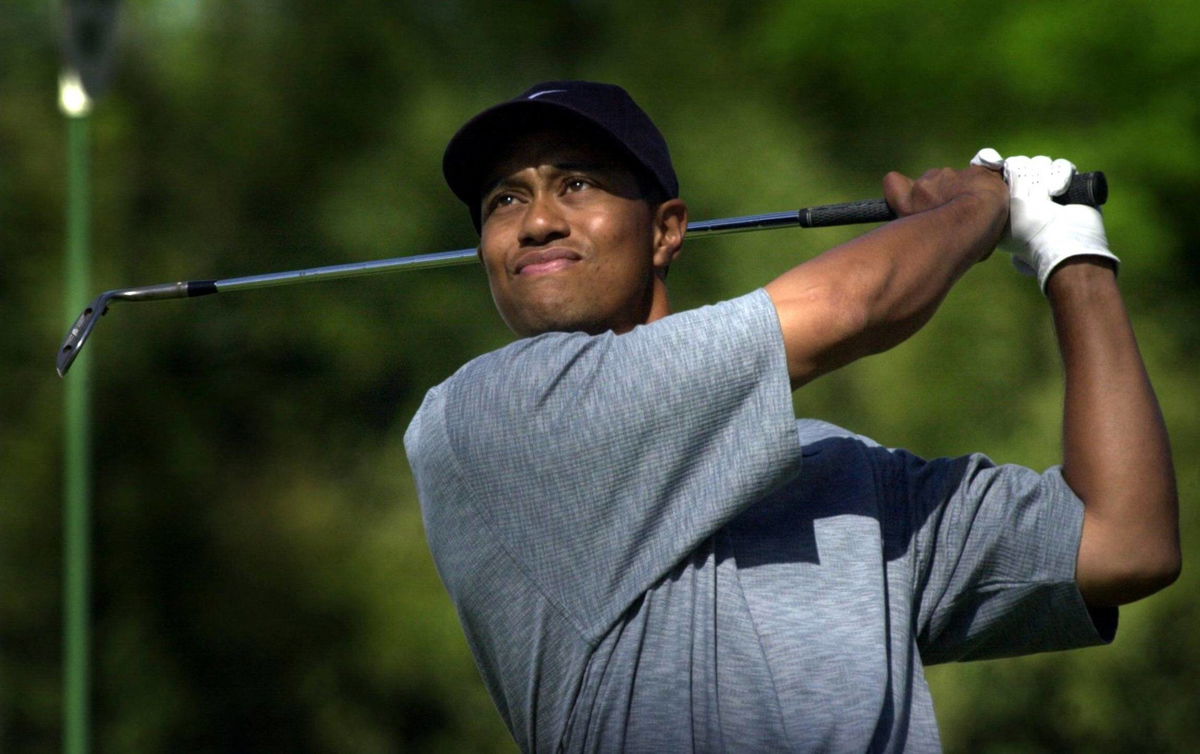Even the greatest golfers can struggle when learning something new. Tiger Woods learned that getting better doesn’t always feel good in the beginning. Woods worked with the legendary instructor Butch Harmon from 1993 to 2004. During their time working together, he discovered that real improvement often feels wrong at first. In fact, “It should feel horrendous.”
Watch What’s Trending Now!
When talking with Matt Gallant on the Son of a Butch with Claude Harmon podcast, the latter recalled a story of his father and Woods working on his grip. “I remember him saying that Tiger, they were trying to weaken his grip, and get the clubface a little bit more open and not so shot at the top, and Butchy said ‘How does it feel’ and Tiger says ‘pretty good’ and Butchy says ‘Well, you are not doing it then,’” said Claude Harmon III.
When the 15-time major champion started working with Butch Harmon, one of the first things the legendary instructor did was loosen his left-hand grip. In his early career, Woods had a strong left-hand grip. He used this grip through his 1997 Masters win. Woods’ early grip had given him power but sacrificed repeatability.
ADVERTISEMENT
Article continues below this ad
The adjustment with Harmon improved control over his ball flight, reduced backspin, and helped him achieve a swing that was both powerful and consistent. It was a small change that made a huge difference. The only catch was that it took patience to feel right.
Butch Harmon explains the best way to stop pulling iron shots. ✍️
— Golf Digest (@GolfDigest) November 25, 2024
ADVERTISEMENT
Article continues below this ad
Harmon shared his experience of teaching Woods with his son, Claude Harmon III. Claude spoke about how his father told him why it is not the right thing to feel good when changing a golfer’s grip. “If you are a right-handed golfer trying to strengthen your left hand, you get it over there, and someone says, you have hit 4-5 balls, and how does it feel, and it feels good. And you are like, dude, you are not even doing it. It should feel horrendous.”
Grip is one of the most fundamental aspects of the swing. It directly affects clubface position and swing mechanics. Therefore, if someone feels good right away, it suggests that the golfer is unconsciously reverting to the old grip. Since the grip change alters wrist angles, it should feel awkward in the beginning. The very ‘horrendous’ feeling is part of rewiring motor skills and building new muscle memory.
Woods is not the only one who benefited from Harmon’s training. Many professional golfers have worked with him. Some of these include Phil Mickelson, Dustin Johnson, Brooks Koepka, and Tommy Fleetwood. In fact, many still remember Harmon’s lessons.
Ryan Mouque, a fellow instructor, explained something Harmon had said about the cancer in the golf swing. “Don’t be focusing on your takeaway if that’s not the “thing” that is affecting impact. Fix the most important thing (the cancer). If you don’t know what that is, that’s why I’m here to help you,” Mouque wrote on his X account.
Harmon always tried to find what was wrong in his students’ swings and fix it, regardless of how long it took. For instance, Harmon himself shared that he used to make Woods do hundreds of pauses or slow swings when he changed his swing. After working with Butch Harmon, Woods went on to work with other instructors, too. Over time, his grip had undergone quite a lot of change.
Change in Tiger Woods’ grip over time
After working with Butch Harmon, Woods worked with Hank Haney from 2004 to 2010. During this time, he weakened his left-hand grip even more. This helped Woods to control fades and a more laid-back swing plane. The aim was to increase control fades and hooks. However, this also sometimes led to struggles with power and driver performance due to the loosened left hand.
After Haney, Woods worked with Steve Foley until 2016. During this time, Tiger strengthened his left-hand grip again. He moved it slightly stronger than neutral to improve shaft lean at impact and stay centered longer during the backswing. His right hand also strengthened in the process.
ADVERTISEMENT
Article continues below this ad
Currently, Woods is not working with any swing coach. He has settled on a more neutral grip. Having spent many years at it, there have been changes to his game.
Tiger Woods has undergone numerous surgeries over the years. These have affected his swings and his return to the PGA Tour. After an Achilles tendon surgery sidelined him in March, he was back swinging at Liberty National Golf Club when hosting the Nexus Cup. Fans will have to wait and see if he makes a comeback in 2026.







